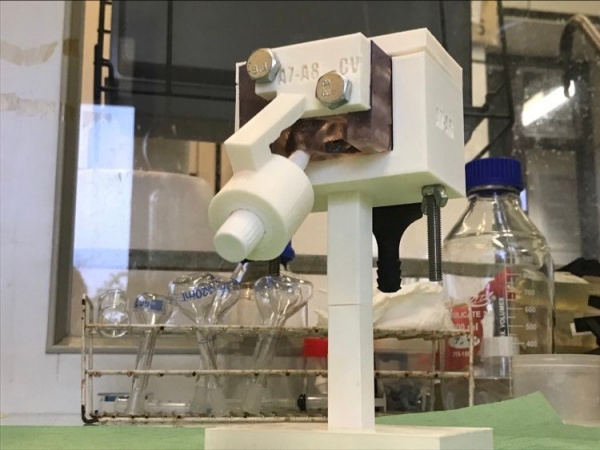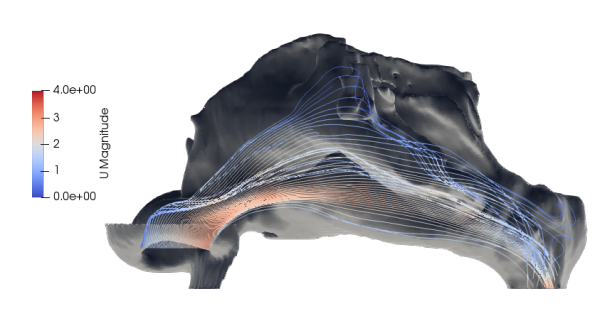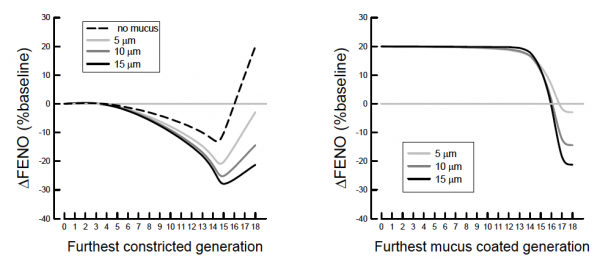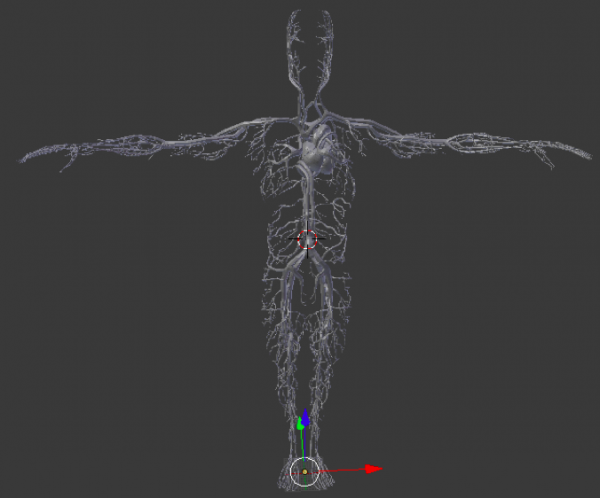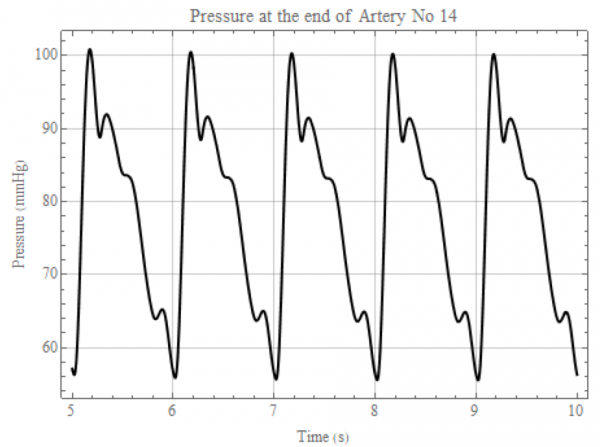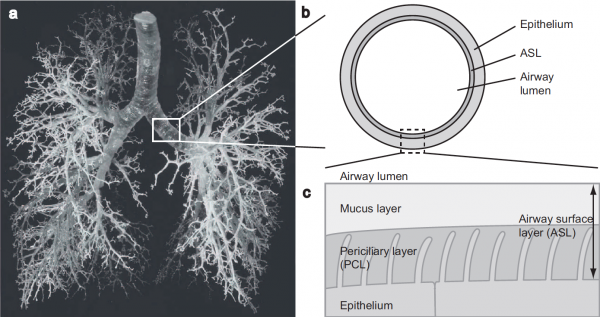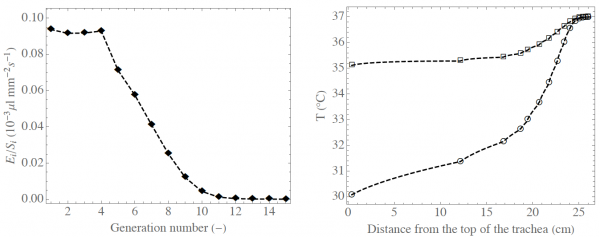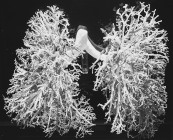
Physiological fluids
Presentation
In this research theme, our objective is to make a significant contribution to the understanding of the transport processes taking place in the respiratory and cardiovascular systems, in the perspective of being able to propose innovative solutions for various pathologies.
Regarding the respiratory system, we have two distinct, but coupled, interests. The first objective of our research is to go towards a better understanding of the dynamics of the bronchial mucus, in healthy and unhealthy people. Human bronchi are covered with a thin layer of mucus. This layer acts as a trap for inspired fine particles and microorganisms. However, today, the dynamics of the bronchial mucus is still poorly understood. In addition, it is known that, in the context of certain diseases such as asthma and cystic fibrosis, this dynamics is significantly impaired. In collaboration with the pulmonology department of the Erasme Hospital, our goal is to improve the understanding of the bronchial mucus dynamics by combining in silico (modelling and simulation) and in vitro (laboratory experiments) studies. A specific objective is to analyse the coupling, potentially very important, between the rheology of the mucus and the respiratory conditions (respiration frequency, breathing air temperature and humidity…). Another of our objectives is to understand how the heterogeneity of the lungs (whether natural or induced by pathologies) influences the exchange processes within it (water, heat, oxygen transport). In this context, we are interested in describing the dynamics of the NO, a physiological molecule that can be considered as a marker of different phenomena. In particular, in collaboration with the Karolinska Institute (Sweden), we are studying how this molecule can be used as a tool for monitoring respiratory function on the International Space Station (ISS).
Regarding the cardiovascular system, our interest lies in the development of models of blood circulation (systemic and pulmonary circulations). The approaches followed are varied, ranging from the use of computational fluid dynamics to representations of the cardiovascular system in the form of equivalent electrical circuits. The objective is then to use these models to develop non-invasive methods for determining the cardiac output or to simulate ballistocardiography (BCG) signals. BCG is a medical technique consisting in measuring, thanks to sensors, the small movements of the body induced by the blood circulation.
Finally, as part of the Nasal cast project, we aim to develop, through digital simulation and 3D printing, solutions to optimize the "nose-to-brain" delivery of drugs against degenerative diseases. We are also interested in the analysis of the complex heat and water exchanges in the nasal cavity, contributing to the conditioning of the air when breathing.
Contact : Benoit Haut
Media
Researchers
-
 Benoit HautProfessorsHead of the laboratory, University professor
Benoit HautProfessorsHead of the laboratory, University professor -
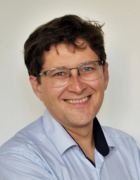 Pierre LambertProfessorsUniversity professor
Pierre LambertProfessorsUniversity professor -
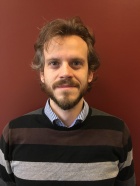 Thomas LessinnesProfessorsUniversity professor
Thomas LessinnesProfessorsUniversity professor -
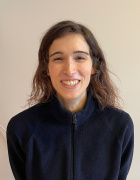 Adam ChafaïStaffLab manager, PhD
Adam ChafaïStaffLab manager, PhD -
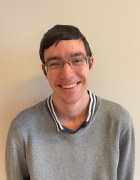 Clément RigautPost-doctoral researchersNasal cast project
Clément RigautPost-doctoral researchersNasal cast project -
 Margaux ManneartsPhD studentsWin4Doc grant
Margaux ManneartsPhD studentsWin4Doc grant -
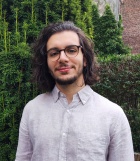 Rami TaheriPhD studentsNIH project
Rami TaheriPhD studentsNIH project
Selected publications
Haut, B., Atasi, O., & Sobac, B. Respiratory Drop Dynamics: Evaporation, Sedimentation, and Implications for Airborne Disease Transmission. Journal of Colloid and Interface Science, 137715. 2025
Rigaut, C., Deruyver, L., Goole, J., Lambert, P., & Haut, B. A comprehensive analytical model for predicting drug absorption in the olfactory region: Application to nose-to-brain delivery. International journal of pharmaceutics, 125392. 2025
Haut, B., Karamaoun, C., & Rigaut, C. A new computational framework for simulating airway resistance, fraction of exhaled nitric oxide, and diffusing capacity for nitric oxide. PloS one, 20(1), e0311667. 2025
Ceccacci, S., Calmet, H., Gargallo-Peiró, A., Rigaut, C., Haut, B., Houzeaux, G., & Eguzkitza, B. A bouncing computational model of particle–mucus interaction for predictive deposition maps in the airways. Journal of aerosol science, 185, 106536. 2025
Rigaut, C., Giaprakis, A., Deruyver, L., Goole, J., Lambert, P., & Haut, B. The air conditioning in the nose of mammals depends on their mass and on their maximal running speed. Scientific Reports, 14(1). 2024
Haut, B., Karamaoun, C., Mauroy, B., & Sobac, B. Water and heat exchanges in mammalian lungs. Scientific reports, 13(1), 6636. 2023
Rigaut, C., Deruyver, L., Niesen, M., Vander Ghinst, M., Goole, J., Lambert, P., & Haut, B. What Are the Key Anatomical Features for the Success of Nose-to-Brain Delivery? A Study of Powder Deposition in 3D-Printed Nasal Casts. Pharmaceutics, 15(12), 2661. 2023
Deruyver, L., Rigaut, C., Gomez, A., Lambert, P., Haut, B., & Goole, J. In vitro Evaluation of Paliperidone Palmitate Loaded Cubosomes Effective for Nasal-to-Brain Delivery. International Journal of Nanomedicine. 2023
Rabineau, J., Issertine, M., Hoffmann, F., Gerlach, D., Caiani, E., Haut, B., van de Borne, P., Tank, J., & Migeotte P.-F. Cardiovascular deconditioning and impact of artificial gravity during 60-day head-down bed rest—Insights from 4D flow cardiac MRI. Frontiers in Physiology. 2022
Calmet, H., Oks, D., Santiago, A., Houzeaux, G., Corfec, A., Deruyver, L., Rigaut, C., Lambert, P., Haut, B., & Goole, J. Validation and Sensitivity analysis for a nasal spray deposition computational model. International journal of pharmaceutics, 626, 122118. 2022
Rigaut, C., Deruyver, L., Goole, J., Haut, B., & Lambert, P. Instillation of a Dry Powder in Nasal Casts: Parameters Influencing the Olfactory Deposition With Uni- and Bi-Directional Devices. Frontiers in Medical Technology, 4. 2022
Karamaoun, C., Haut, B., Blain, G., Bernard, A., Daussin, F., Dekerle, J., Bougault, V., & Mauroy, B. Is airway damage during physical exercise related to airway dehydration? Inputs from a computational model. Journal of Applied Physiology. 2022
Rabineau, J., Nonclercq, A., Leiner, T., Van De Borne, P., Migeotte, P.-F., & Haut, B. Closed-Loop Multiscale Computational Model of Human Blood Circulation. Applications to Ballistocardiography. Frontiers in Physiology. 2021
Haut, B., Nonclercq, A., Buess, A., Rabineau, J., Rigaut, C., & Sobac, B. Comprehensive Analysis of Heat and Water Exchanges in the Human Lungs. Frontiers in Physiology, 12. 2021
L Deruyver, L., Rigaut, C., Lambert, P., Haut, B., & Goole, J. The importance of pre-formulation studies and of 3D-printed nasal casts in the success of a pharmaceutical product intended for nose-to-brain delivery. Advanced drug delivery reviews, 113826. 2021
Buess, A., Van Muylem, A., Nonclercq, A., & Haut, B. Modeling of the transport and exchange of a gas species in lungs with an asymmetric branching pattern. Application to nitric oxide. Frontiers in Physiology, 11. 2020
Rabineau, J., Hossein, A., Landreani, F., Haut, B., Mulder, E., Luchitskaya, E., Tank, J., Caiani, E., van de Borne, P., & Migeotte, P. Cardiovascular adaptation to simulated microgravity and countermeasure efficacy assessed by ballistocardiography and seismocardiography. Scientific Reports, 10, 1-13. 2020
Karamaoun, C., Sobac, B., Mauroy, B., Van Muylem, A., & Haut, B. New Insights into the Mechanisms Controlling the Bronchia Mucus Balance. PLOS One, published 22 June 2018
Karamaoun, C., Haut, B., & Van Muylem, A. A new role for the exhaled nitric oxide as a functional marker of peripheral airway calibre changes: a theoretical study. Journal of Applied Physiology, 124, 1025-1033. 2018
Karamaoun, C., Van Muylem, A., & Haut, B. Modelling of the nitric oxide transport in the human lungs. Frontiers in Physiology, 7, 255. 2016
